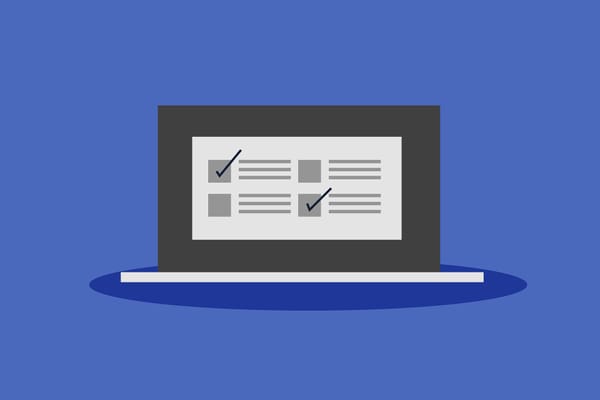Digital identity: Control your privacy series

How to stop marketers from seeing that you opened their emails (on Gmail)
Overview: Some emailers want to know whether you opened their emails. As no "read receipt" is built into an email, they add their tracking method called "pixel tracker."
A pixel is embedded into the email into an image or link. When you open that email, the pixel reports back to the original sender without you knowing.
Action: The setting you want to enable is "Ask before displaying external images."
On desktop devices, you'll find that under Settings > See all settings > General, then under "Images."
On iOS, tap the menu icon, then go to Settings > Email Preferences > Images.
On Android, tap the menu icon, then go to Settings > [your email account] > Images.
How to delete your house's pictures from realty sites
Overview: Your house picture can be used by identity thefts, scammers, or even stalkers to verify your address, see what the house looks like, or impersonate you. So, if there is no good reason for them to be there (active selling or renting out ads), consider removing them.
Action: The first step is to claim ownership of the home on each site where you have listed it. Sign in to your account, go to the Home tab/ dashboard, and look for the option to "claim/ verify ownership." Follow the steps for each app your home is listed on.
Step 2 is to reenter your account, select the property and then Edit tab. You have the option to remove photos and any details you don't want to be public anymore.
How to remove your phone number and location from Twitter
Overview: Twitter is reportedly planning to sell some data of its users to advertisers. If you are concerned about what might happen, remove your phone number and location from the platform.
Action:
If you receive login codes via SMS, switch to a different form of two-factor authentication before removing your phone number. Then, go to Twitter's two-factor authentication page and uncheck Text message. To delete your phone number, go to Settings and Privacy ->select Your Account-> Account Information->phone.
To remove location, go to Settings > Privacy > Location on your device and remove location access for Twitter. To remove all location data attached to older tweets, select Remove all location information attached to your Tweets and select Delete.
How to hide your WhatsApp 'Last Seen' status from specific people
Overview: Sometimes, you don't want everybody on your list to see you've read their messages or that you are online. Should that be the case, you can customize your privacy features and choose who and what sees.
Action:
Go to Settings > Privacy > Who can see my personal info.
Choose the "My Contacts Except" option and select the contacts you don't want to see: Last seen and online / Profile photo/ About/ Status.
How to check everything Amazon knows about you
Overview: As one of the world's largest e-commerce platforms, Amazon gathers a vast amount of data to personalize your shopping experiences and recommend products. However, it's always a good idea to see how much it knows about you. It might inspire you to take better control of your privacy.
Action: Log into your Amazon account > click on Account > Data and Privacy > Click on Request Your Information. From the dropdown menu, choose the data you want from Amazon. If you want everything, select "Request All Your Data." Hit "Submit Request," You'll receive an email to confirm the request, and after confirming, you are assured that Amazon will provide your information as soon as they can, and "usually, this should not take more than a month."
How to Move Your Sensitive Photos and Videos to a Locked Folder in Google Photos
Overview: If you use Google photos and have photos and videos that you don't want anyone else to bump into, consider using the Locked Folder feature.
Action:
- Go to your Google Photos.
- Browse your items and open a picture or video you want to lock.
- Tap the three dots in the top-right, scroll through the expanded options, and tap "Move to Locked Folder."
When you use the feature for the first time, Google Photos will show you a screen detailing what the feature is about. It's worth keeping in mind that you will hide items elsewhere in Google Photos and other apps on your device. The items will not be backed up or shared, won't be moved automatically when you transfer devices and will be deleted if you uninstall Google Photos.
Don't share blurred sensitive information on the internet
Overview: If you are in the habit of sharing screenshots with blurred information on the internet, for example, phone numbers, addresses, and car plates be aware that there are tools available that can easily reveal text hidden under effects such as pixelation. That being said, imagine how quickly can malicious actors access the information you are trying to hide and what they could do with it.
Action: The safest thing to do is not to share this kind of screenshot. But if you have to, consider using safer alternatives such as: adding solid color blocks, emoji, or cropping it out. You can do it in any image editor on desktop or mobile devices. Take your time, edit them properly, and check all your photos and screenshots for anything private or sensitive before sharing them.
How to activate incognito mode on ChatGPT
Overview: By default, ChatGPT will use your messages and conversations to "train and improve" its models. This also means controlling or deleting data used for this purpose may be difficult.
Action: The safest way is to refrain from giving it any private or sensitive information. You can also opt out of saving your chats and allowing them to be used for training.
To do so, open ChatGPT in your browser, click your username on the left, go to Settings, and next to Data Controls, click Show. Once there, turn off the Chat History & Training toggle switch. From then on, whenever you close the browser tab, your conversation log with ChatGPT will disappear from your account. However, OpenAI keeps your chat history for 30 days to "monitor for abuse" before permanently deleting it
tags
Author
Cristina is a freelance writer and a mother of two living in Denmark. Her 15 years experience in communication includes developing content for tv, online, mobile apps, and a chatbot.
View all postsRight now Top posts
Outpacing Cyberthreats: Bitdefender Together with Scuderia Ferrari HP in 2025
March 12, 2025
Streamjacking Scams On YouTube Leverage CS2 Pro Player Championships to Defraud Gamers
February 20, 2025
How to Identify and Protect Yourself from Gaming Laptop Scams
February 11, 2025
Your Device ‘Fingerprint’ Will Go to Advertisers Starting February 2025
December 24, 2024
FOLLOW US ON SOCIAL MEDIA
You might also like
Bookmarks







